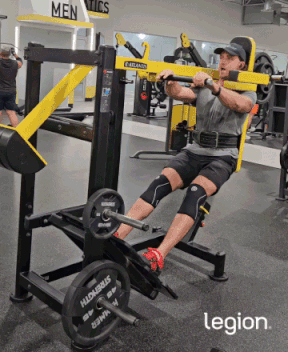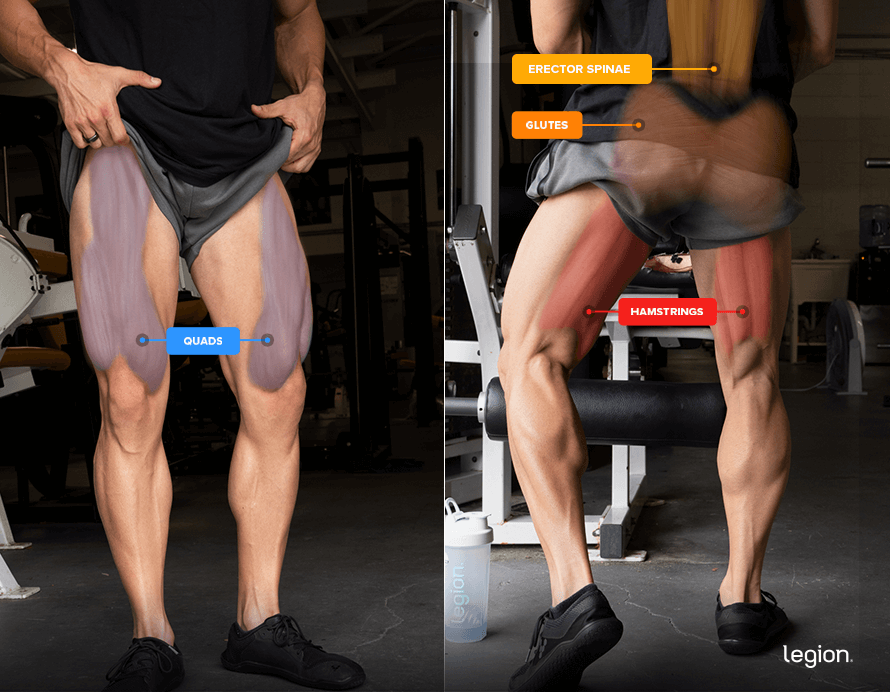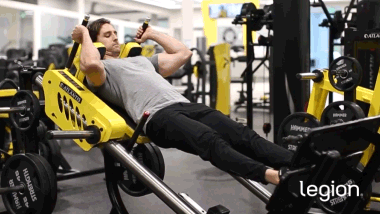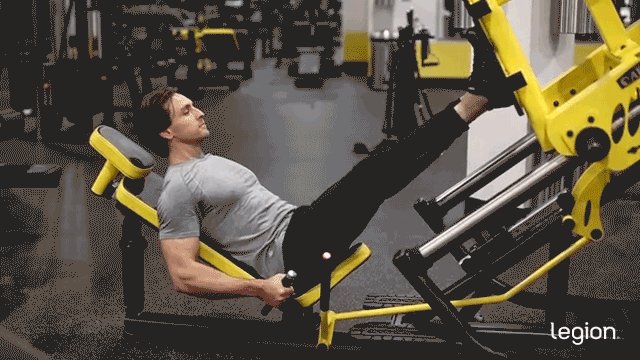If you’re lucky enough to have a pendulum squat machine in your gym, you really ought to use it—it’s one of the very best leg exercises for gaining lower body size and strength.
It’s so effective because it makes squatting deeply safe, stable, and straightforward, even if you have limited mobility.
In this article, you’ll learn how to do pendulum squats with proper form. You’ll also discover which muscles they work, why they’re beneficial, the best alternatives, and more.
How to Do Pendulum Squats
To master pendulum squat form, split the exercise into three parts: set up, descend, and squat.
1. Set up
Load the pendulum squat machine with the desired amount of weight, then position your back and hips against the back pad, your shoulders against the shoulder pads, and your feet shoulder-width apart on the footplate with your toes pointed slightly outward.
Grab the handle, then straighten your knees and use the handle to release the weight.
2. Descend
Take a deep breath into your stomach and brace your abs. Then, while keeping your back and hips pressed against the backrest, lower your body by bending your knees. Continue lowering your body as far as you comfortably can, ideally until your calves and hamstrings touch.
3. Squat
Drive your feet into the footplate and straighten your knees to return to the starting position.
Here’s how it should look when you put it all together:

Pendulum Squat: Muscles Worked
The main muscles worked by pendulum squats are:
- Quadriceps
- Glutes
- Hamstrings
They train your calves to a lesser degree, too.
Here’s how the main muscles worked by pendulum squats look on your body:

Pendulum Squat Benefits
Ideal for Lower Body Hypertrophy
The pendulum squat allows you to train all your lower body muscle groups with heavy weights and through a long range of motion, making it ideal for adding mass to your quads, hamstrings, and glutes.
Pendulum squats also have a unique “resistance curve” that makes them harder at the top of each rep than other squat variations and machine leg exercises.
As such, they train your legs slightly differently than other exercises, which is important because research suggests that training your muscles in a variety of ways produces more balanced and complete growth than training with less variation.
Less Lower Back Stress
You don’t support weight with your upper body in the pendulum squat, so there’s almost no stress on your spine when you perform the exercise correctly. This makes it a safer and more practical alternative to other squat variations for those with back issues.
Highly Stable
Exercises like back, front, and Bulgarian split squats are fantastic leg exercises, but they require a level of balance and coordination that some people struggle with, especially when new to weightlifting.
The pendulum squat, on the other hand, is exceptionally stable, particularly when you keep your back and hips pressed against the back pad and hold the machine’s handle, so it’s easier to perform with proper form and reduces your risk of injury.
Require Less Lower Body Mobility
To perform most squat exercises through a full range of motion, you have to have highly mobile ankles.
Specifically, your ankles must allow your knees to track over your feet to reach the bottom of each rep.
However, because of how most pendulum squat machines are configured, your knees don’t need to track over your knees to squat deeply. This makes the pendulum squat more suitable for those with limited lower body mobility and can be gentler on the knees.
How to Pick Your Pendulum Squat Starting Weight?
When people try the pendulum squat machine for the first time, they usually find it surprisingly challenging compared to other free-weight and machine leg exercises.
The main reason for this is that its unique resistance curve taxes your muscles in an unfamiliar way, so you typically can’t lift as much weight as you might expect.
Some pendulum squat machines also have surprisingly high “starting weights” (the resistance you feel when using the machine without any additional weight plates loaded)—more than 100 pounds in some cases.
With these points in mind, selecting a starting weight for the pendulum squat usually requires starting light and using trial and error.
Here’s a strategy that works well for most:
- Do a few reps without loading extra weight on the machine and see how it feels.
- If you want to add resistance, increase the weight by 10-to-20 pounds, and perform a couple of reps.
- Repeat step 2 until you find a weight that allows you to train in your target rep range for the desired number of sets.
The Best Pendulum Squat Alternatives
1. Hack Squat

The hack squat shares many of the same benefits as the pendulum squat despite it having a more typical resistance curve and requiring slightly more ankle mobility to perform correctly.
2. Leg Press

The leg press is a viable alternative to the pendulum squat because it trains the same muscles without stressing your spine. The slight advantage of the pendulum squat, however, is that it allows you to train your leg muscles through a greater range of motion, which usually benefits muscle growth.
3. Belt Squat

The belt squat is an excellent pendulum squat alternative because it allows you to train your entire lower body without loading your spine. Additionally, your movement isn’t as restricted in the belt squat compared to the pendulum squat, so it’s probably more effective for training stabilizer muscles throughout your body.










